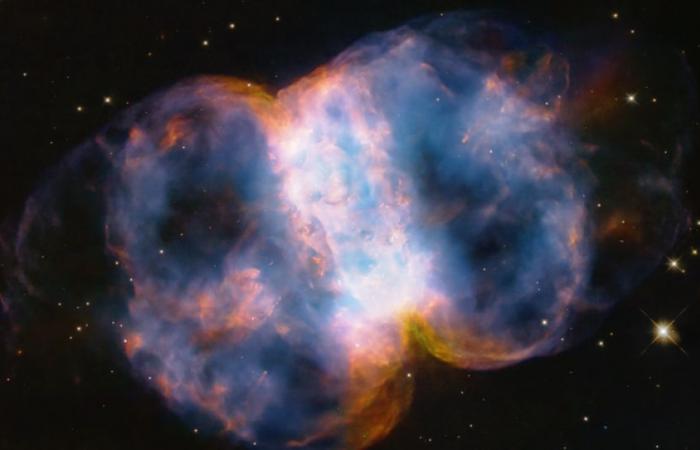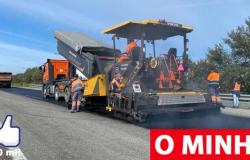Amid the celebrations of the Hubble telescope’s 34th anniversary, NASA published a photo of a nebula found 3,500 light-years from Earth, taken by the observatory
This Wednesday (24) marked 24 years since the launch of the Hubble telescope. To celebrate the milestone, NASA published a beautiful photo captured by the observatory, which shows the Little Dumbbell Nebula. This cloud of gas and dust is 3,400 light-years away, and it’s so photogenic that it’s a favorite among amateur astronomers.
The Small Dumbbell Nebula is also called M76 and is of the planetary type, that is, it is an envelope made of gases released by a red giant star that has ended its cycle. Afterwards, the star’s core will become a white dwarf, a hot and dense object.
The material released by the star formed a dense layer of gas and dust that follows the orbital plane of its neighbor. However, notice that this other object does not appear in the photo — and perhaps this is a sign that it ended up being devoured by the central star.
Thus, contrary to what the name seems to indicate, planetary nebulae have no relationship with planets. In fact, their name is this because in the 1700s astronomers observed them with less powerful telescopes, and thought they were planets.
The Small Dumbbell Nebula through the “eyes” of Hubble (Image: Reproduction/NASA, ESA, STScI)
Photo: Canaltech
Finally, the nebula has two lobes of hot gas — hence its nickname. They are escaping from the top and bottom of the cloud “belt”, following the star’s rotation axis. These structures are driven by the flow of material from the star finishing its cycle, and move through space fast enough for you to travel from Earth in just seven minutes.
The Hubble telescope
Launched in 1990, the Hubble telescope has made 1.6 million observations of more than 53,000 astronomical objects. Since that year, 44,000 scientific articles have been published based on data from the telescope, which is considered the most scientifically productive astrophysics mission in NASA’s entire history.
;
Many of Hubble’s discoveries about black holes, the atmospheres of exoplanets and gravitational lensing were not expected by scientists. After 34 years of operation, the observatory shows signs of wear, but will continue in action until the end of the decade, at least.
Hubble will have a powerful ally. James Webb, NASA’s largest observatory, was designed to be a complement to Hubble, not a replacement. Therefore, both will work as a team: by combining the observed wavelengths, the pair of observatories can reveal protostellar disks, the composition of exoplanets, unusual supernovae and much more.
Source: NASA
Trending on Canaltech:
+The best content in your email for free. Choose your favorite Terra Newsletter. Click here!






